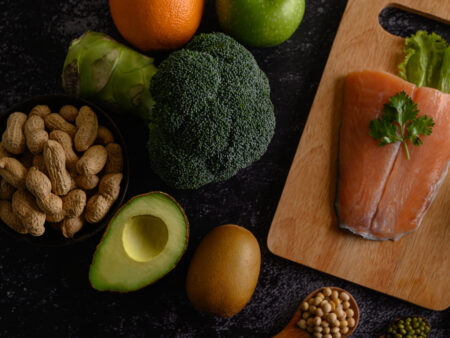
Tom Holland, born Thomas Stanley Holland on June 1, 1996, in Kingston upon Thames, England, is a British actor best known for his portrayal of Spider-Man in the Marvel Cinematic Universe (MCU). The son of photographer Nicola Elizabeth Frost and comedian and author Dominic Holland, Tom grew up in a creative household alongside his three younger brothers, Sam, Harry, and Paddy. From an early age, Tom exhibited a natural talent for performance. He attended Donhead, a Roman Catholic preparatory school, and later Wimbledon College. Holland’s journey into the arts began with dance, leading him to study at the BRIT School for Performing Arts and Technology in London. His breakthrough came in 2008 when he landed a role in the West End production of “Billy Elliot the Musical,” where he showcased his impressive dance and acting skills.
Holland’s leap to Hollywood stardom came in 2015 when he was cast as Peter Parker/Spider-Man in the MCU, debuting in “Captain America: Civil War” (2016). Since then, he has become a fan favourite, starring in several Spider-Man films and other MCU blockbusters. Holland’s charm, athleticism, and dedication to his roles have solidified his status as a leading actor in the industry.
The Spider-Man Transformation: Tom Holland’s Workout and Diet
Portraying a superhero like Spider-Man requires more than just acting prowess; it demands peak physical fitness, agility, and strength. Tom Holland’s transformation into the friendly neighbourhood Spider-Man involved an intense workout regimen and a disciplined diet. Here’s a comprehensive look into how Holland achieved his superhero physique.
The Workout Regimen
To embody Spider-Man, Tom Holland’s training focused on building functional strength, agility, and lean muscle mass. His workout routine was designed by personal trainer George Ashwell and included a combination of weight training, functional exercises, and gymnastics.
1. Functional Strength Training
– Compound Movements: Holland’s routine emphasized compound exercises such as squats, deadlifts, bench presses, and pull-ups. These movements engage multiple muscle groups, promoting overall strength and coordination.
– Circuit Training: To keep the workouts dynamic and challenging, Holland often performed circuit training, which involves moving from one exercise to the next with minimal rest. This approach boosts cardiovascular fitness and muscular endurance.
2. Gymnastics and Bodyweight Exercises
– Gymnastic Drills: Given Spider-Man’s acrobatic nature, Holland incorporated gymnastics into his training. He worked on skills such as flips, handstands, and other bodyweight movements to enhance his agility and body control.
– Calisthenics: Exercises like push-ups, pull-ups, and dips were staples in his routine, helping to build a strong, toned upper body and core.
3. HIIT and Cardiovascular Training
– High-Intensity Interval Training (HIIT): Holland’s workouts often included HIIT sessions, which involve short bursts of intense exercise followed by rest or low-intensity periods. This method is effective for burning fat and improving cardiovascular health.
– Running and Jump Rope: To maintain endurance and agility, Holland incorporated running and jump rope into his cardio routine. These activities also improve coordination and stamina.
4. Flexibility and Recovery
– Stretching: Flexibility is crucial for the fluidity of Spider-Man’s movements. Holland dedicated time to stretching and mobility exercises to prevent injuries and maintain a full range of motion.
– Rest and Recovery: Adequate rest is essential for muscle recovery and growth. Holland ensured he had sufficient rest days and utilized recovery techniques such as foam rolling and massage.
The Diet Plan
Tom Holland’s diet was as crucial as his workout regimen in achieving a superhero physique. His nutrition plan focused on providing the energy needed for intense workouts while promoting lean muscle growth and overall health.
1. Balanced Macronutrients
– Proteins: To support muscle repair and growth, Holland consumed high-quality protein sources such as chicken, fish, eggs, and lean beef. Protein shakes and supplements were also part of his diet to meet his daily protein requirements.
– Carbohydrates: Carbohydrates provided the energy necessary for his rigorous training sessions. Holland’s diet included complex carbs like brown rice, quinoa, sweet potatoes, and whole grains.
– Fats: Healthy fats from sources such as avocados, nuts, seeds, and olive oil were included to support overall health and hormone balance.
2. Meal Timing and Frequency
– Frequent Meals: To keep his metabolism active and maintain energy levels, Holland ate multiple small meals throughout the day. This approach also helped in muscle recovery and growth.
– Pre- and Post-Workout Nutrition: Pre-workout meals typically included a balance of protein and carbohydrates to fuel his workouts, while post-workout meals focused on protein and carbs for muscle recovery.
3. Hydration
– Water Intake: Staying hydrated was crucial for maintaining performance and overall health. Holland drank plenty of water throughout the day, especially before and after workouts.
– Electrolytes: To replace lost electrolytes during intense training, he consumed drinks that provided essential minerals like sodium, potassium, and magnesium.
4. Supplementation
– Protein Supplements: Protein shakes helped Holland meet his daily protein needs, especially after workouts.
– Multivitamins: To ensure he was getting all necessary micronutrients, Holland took multivitamins and other supplements as needed.
Tom Holland’s dedication to his workout and diet regimen was pivotal in his physical transformation into Spider-Man. This commitment involved not just lifting weights or following a diet plan, but a comprehensive approach that focused on functional strength, agility, and proper nutrition. By integrating these elements, Holland was able to develop a lean, muscular physique that mirrored the iconic superhero’s build.
Functional strength training ensured he was not just building muscle, but also enhancing his overall athletic performance, which is crucial for the physically demanding stunts and movements required for the role. Agility training through gymnastics and bodyweight exercises enabled him to perform Spider-Man’s acrobatic feats with authenticity and ease, adding a dynamic layer to his portrayal. Proper nutrition played an equally critical role. By maintaining a balanced diet rich in proteins, carbohydrates, and healthy fats, Holland supported his intense training sessions and muscle recovery. This holistic approach to fitness and nutrition didn’t just transform his body; it significantly boosted his on-screen performance, allowing him to execute complex stunts and action sequences with precision and confidence.
Holland’s fitness journey underscores the immense hard work and discipline needed to convincingly portray a beloved superhero like Spider-Man. It highlights that achieving such a transformation goes beyond physical appearance, emphasizing the importance of overall physical capability and endurance.






